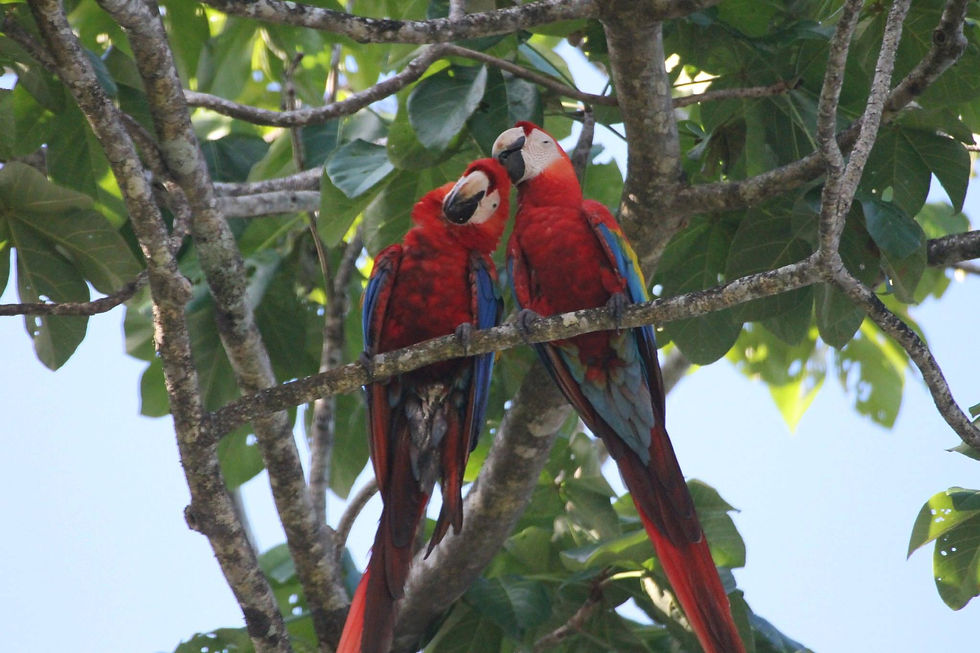Wildlife Spotlight | Scarlet Macaws
- May 22, 2019
- 2 min read
When you stay at Casa Arenosa, you will see an abundant number of scarlet macaws roosting in the almond trees in the front yard and soaring overhead, so you might not realize that these birds are very endangered. The Osa Peninsula is one of their last habitats that remains. It's truly a privilege to be able to witness the remaining scarlet macaws in their natural habitat.
Read on to learn more about these magnificent creatures!
Scientific Name: Ara macao cyanoptera
Status in the Wild: Endangered
Habitat: Rainforests, Tropical Dry Forests
Diet: Herbivore
The scarlet macaw is a member of the parrot family and is native to parts of Central and South America. The Central American sub-species found in Costa Ricas also inhabits parts of Mexico, Guatemala and Belize. Its southern counterpart, the South American scarlet macaw is found in Columbia, Ecuador, Peru and Brazil. In Costa Rica, the best places to view them are in Corcovado National Park on the Osa Peninsula, and Carara National Park, just outside of Jaco.
Locally known as lapas, Costa Rica’s macaw has mostly scarlet-colored plumage with light blue accents on their tails and yellow and blue on their wings. (The South American scarlet macaw is larger and has green on its wings rather than blue).
Macaws are the largest parrots in the world, and the scarlets grow up to 36 inches from beak to tail, and weigh between 2-2.5 pounds. Their diet consits of fruits, nuts, seeds, flowers and nectars. The macaw often feeds on fruits that are extremely toxic to other animals. This is possible because they also eat large amounts of clay, which helps neutralize plant poisons.
HABITAT:
Found in increasingly fewer locations, macaws prefer undisturbed lowland tropical forests, such as those found in Carate and Corcovado National Park. The country's second largest population of macaws (estimated at 450) inhabit the dry tropical forest of Carara National Park, near the Central Pacific Coast. In the early 1900’s, macaws could be found on the Caribbean slope of Costa Rica, but habitat loss drove them out completely by the 1950’s.
Scarlet macaws have large territories and fly in pairs or small families, reaching speeds up to 35mph. They call to each other with deep, raucous squawks and shouts while in flight, but are rather quiet while feeding.
BEHAVIOR:
Scarlet macaws are monogamous and pair for life. Couples lay 1-2 eggs once a year during the dry season (December – April) in natural cavities in tall trees. Adults care for their young for up to two years and will not lay another clutch until all the young leave the nest. Both parents incubate and feed the young, which hatch blind and naked. Macaws can live forty years or longer. When one member of the pair dies, the remaining bird sometimes dies shortly after.
STATUS IN THE WILD:
Scarlet macaws are endangered throughout much of their range. Deforestation has greatly impacted these beautiful birds because without their natural habitats to nest in, they stop laying eggs and their populations diminish. Food may also become difficult to find. Macaws' popularity as pets has also reduced their numbers.


Comments